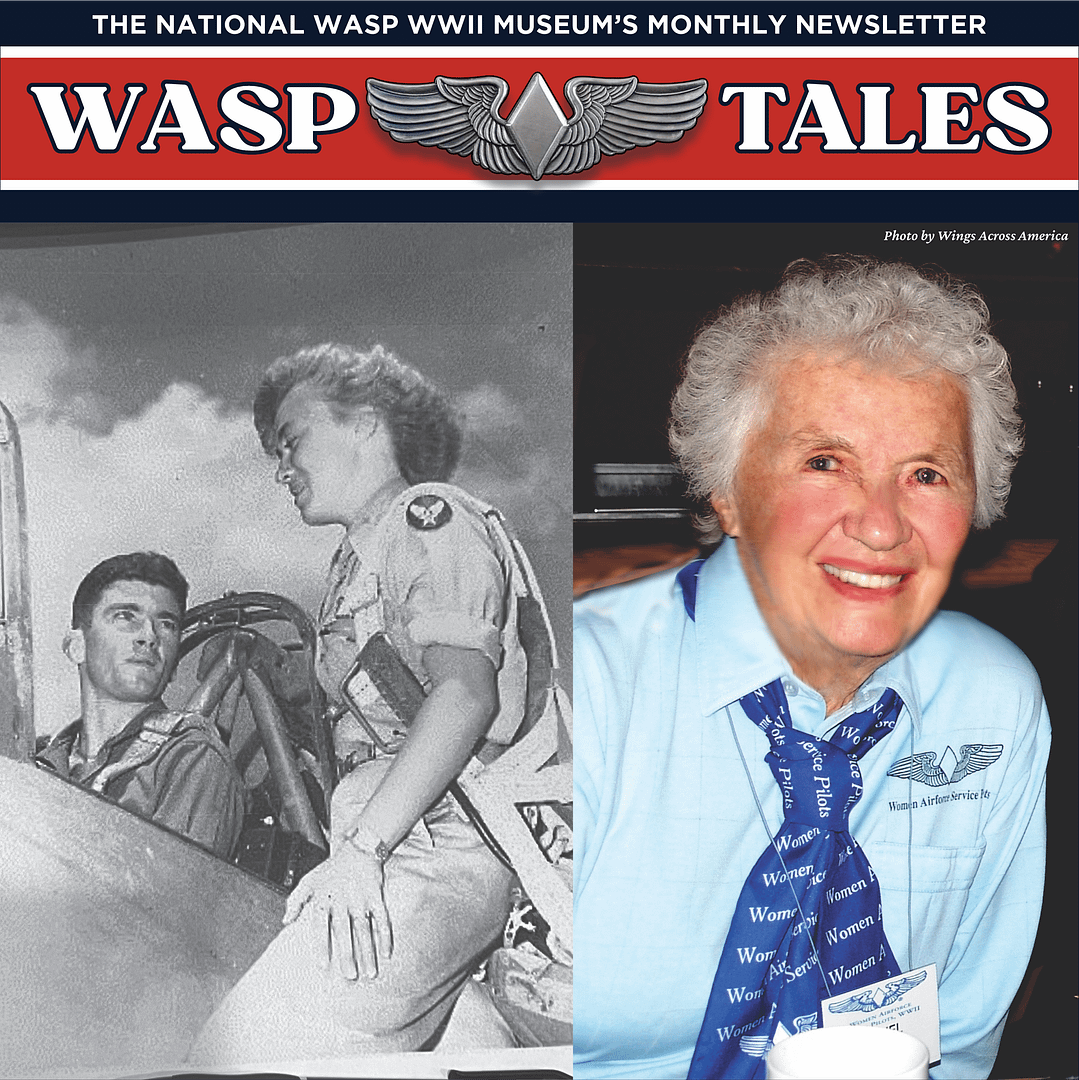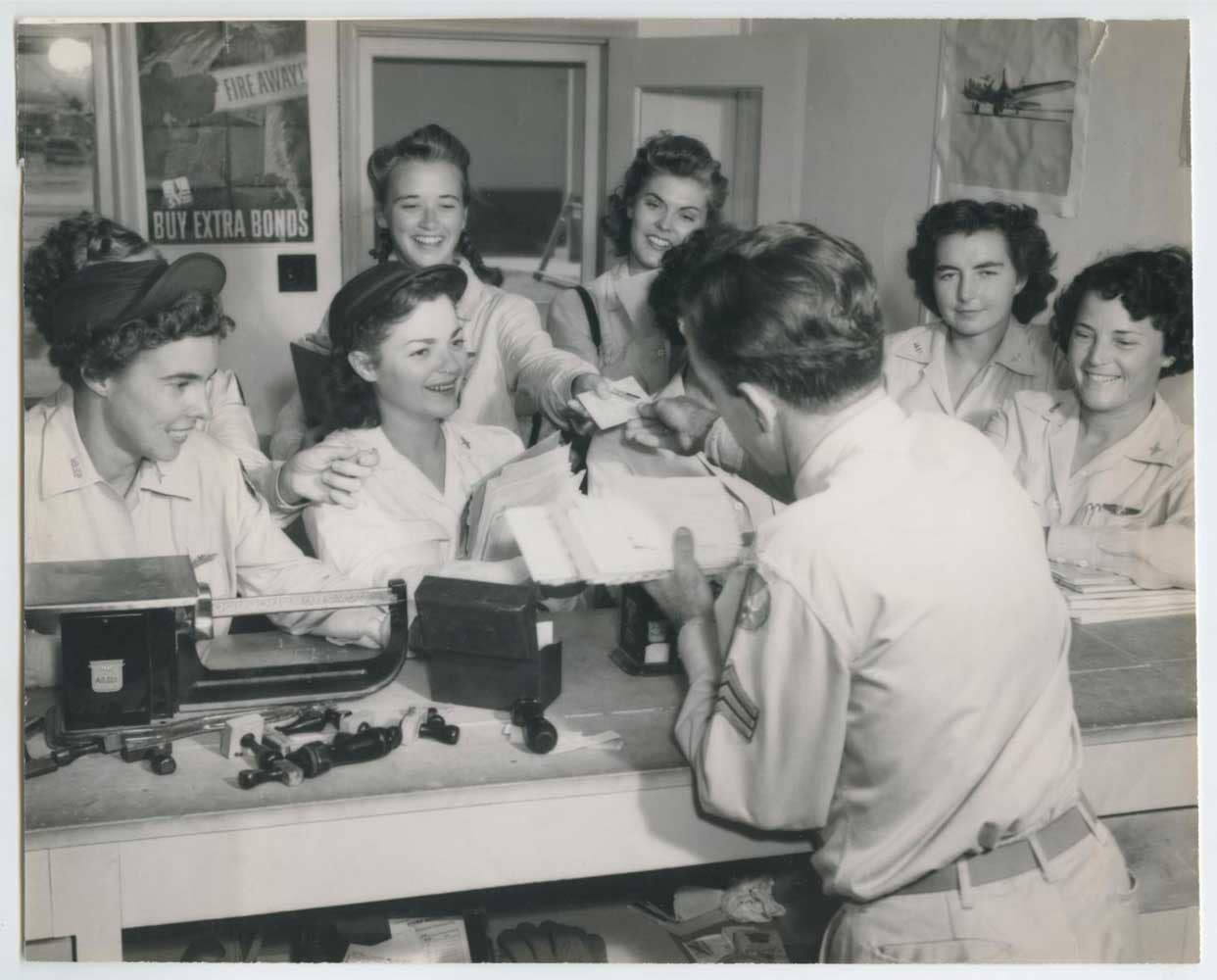The American civil war ended nearly four-score years before the Women Air Force Service Pilots came into existence. So what does the American civil war have to do with the WASP?
Some years ago I discovered that WASP Ethel Meyer Finley was a graduate of my alma mater at Winona State University in Winona, Minnesota. Unfortunately, I learned this fact a year or two after Ethel passed away in 2006. Had I known this I would have reached out to her for an interview. Nevertheless, I began researching her and eventually wrote an article about Ethel for the Winona State alumni magazine. I found her story very interesting
A native of Lake City, Minnesota, Ethel was attending Winona State in 1940 when she joined the Civilian Pilot Training program. She learned to fly under the tutelage of famous long-distance flyer Max Conrad. According to Ethel’s oral history at Texas Women’s University, Max would pick Ethel up in the early morning hours before her classes. Max often had juice and a doughnut in the car for Ethel’s pre-flying-lesson breakfast.
After getting her private license and graduating from WSU, Ethel took a job teaching math at nearby Rushford, Minnesota, High School. With the outbreak of World War II and the creation of the WASP, Ethel was one of the fortunate women to receive an invitation to apply for the WASP program. She was selected and reported to Avenger Field at Sweetwater as a member of WASP Class 43-W-5.
Ethel not only completed the training, her teaching experience also made her a prospect for becoming a flight instructor – and she became the U.S. Army Air Force’s first female flight instructor. She was assigned to Shaw Army Airfield in South Carolina, teaching male cadets.
Additional research turned up an interesting photo in the archives of the Winona Republican-Herald newspaper in July 1944. The photo shows not only Ethel but also a male student pilot – Lieutenant John F. R. Scott. Scott is strapped into the front cockpit of a 450-horsepower Vultee BT-13 basic trainer. Ethel stands on the wing, giving her student instructions before a flight.
The lieutenant’s name with two middle initials struck me as unusual. I did a Google search of Lt. J. F. R. Scott. The results were astounding.
Lt. John F.R. Scott’s middle initials stood for “Fulton Reynolds.” And why did “Fulton Reynolds” sound familiar to me? I knew exactly who John Fulton Reynolds was.
In addition to my lifelong love of airplanes and flying, I’ve been a civil war reenactor with Company B of the 2nd Wisconsin Volunteer Infantry Regiment – portraying the soldiers from La Crosse, Wisconsin, where I lived until 2019. The “Old Second” was the cornerstone regiment of the 1st Brigade of the 1st Division of the 1st Army Corps, Army of the Potomac – and became known as the “Iron Brigade” after Antietam.
The commander of the 1st Army Corps was General John Fulton Reynolds – Lt. John Fulton Reynolds Scott’s paternal great uncle!
The young lieutenant was himself a graduate of Virginia Military Institute. Not only did he have a civil war general in his ancestry, but young J.F.R. Scott was also descended from Captain Samuel Moore, 3rd Pennsylvania Regiment, who served with George Washington during the American Revolution.
Union General John F. Reynolds was said to have been one of, if not the best Union general of his day. On the morning of July 1, 1863, General John Buford’s Union artillery batteries were near to being overrun by thousands of Confederate troops in the fields just west of a small Pennsylvania crossroads that is today as famous a town as any in American history: Gettysburg.
It was General John Reynolds and his 1st Corps who came to the rescue of Buford’s beleaguered artillery. From horseback and in front of his troops, General Reynolds sent the 2nd Wisconsin Infantry Regiment — including Company B — charging into McPherson’s Woods at Gettysburg. Survivors of the fighting said General Reynolds shouted, “Forward! For God’s sake forward!”
Unfortunately, those were his very last words. He died instantly, struck by a Minie ball to the back of his head. Some said it was a sniper’s bullet. Others claimed it may have been friendly fire.
Although Reynold’s troops stopped the rebel advance that hot July morning, their admired and respected commander was dead. Today, one can visit the Gettysburg battlefield and the spot where General Reynolds fell – now known as Reynold’s Woods.
And what of General Reynolds’s grand-nephew and aviator, Lt. John Fulton Reynolds Scott?
Apparently, WASP Ethel Meyer Finley instructed Lt. Scott very well. Scott went on to win his silver wings and fly P-51 Mustangs in the Pacific Theater. He saw action at Iwo Jima. Later, during a strafing mission over Japan, his Mustang was hit by ground fire. He bailed out over the Pacific Ocean and luckily was rescued by a nearby Navy ship. For his World War II service, he earned the Air Medal with two oak leaf clusters, a Distinguished Unit Citation, the Asiatic-Pacific Ribbon with two battle stars, and the Philippine Liberation Medal.
Returning to Maryland after the war Scott joined the Air National Guard’s 104th Tactical Fighter Squadron, becoming flight leader and instructor. According to his obituary, he was promoted to squadron commander in 1955.
Interestingly, Scott also created a precision aerobatic flight demonstration team called the Guardian Angels in 1952. Flying P-51H Mustangs, they performed at east coast airshows for two seasons until the end of 1953.
Lt. Col. Scott retired from the Air National Guard in 1961 and was awarded the Maryland Distinguished Service Cross, the state’s highest military decoration. He later served as the Friendship Airport director and in 1972, became associate administrator for the Maryland Aviation Administration, overseeing operations at what is now Baltimore-Washington International Airport. He retired in 1984.
Scott was a member of many organizations, including the Glenn L. Martin Aviation Museum. As a further legacy, he wrote “Voyages into Airy Regions,” a history of Maryland aviation. John Fulton Reynolds Scoot passed away in 2003.
And what of Ethel Meyer Finley, Lt. Scott’s basic flight instructor? During a year and a half at Shaw Field in South Carolina training male cadets, Finley flew 12 different aircraft. Her duties eventually included as co-pilot transporting officers and non-flying personnel, test-flying repaired aircraft, and teaching male instructor pilots. Finley logged 1074 flying hours before the WASP were disbanded in December 1944.
Ethel Meyer Finley became very active in the WASP organization, serving two terms as a regional director, as editor of the WASP News, and as WASP National President. Among her many honors, Ethel was inducted into the Minnesota Aviation Hall of Fame in 2006, but passed away in February 2006, shortly before the induction ceremony.

1st Photo courtesy of & article written by Frederick Beseler
2nd Photo courtesy of Wings Across America
About Frederick Beseler:
Frederick Beseler is retired after a nearly 40-year career in the commercial air conditioning industry as a technical, advertising, and marketing writer and editor. A pilot since 1978, Beseler has given numerous presentations and written many aviation- and civil war-related articles. He is a past president of EAA Chapter 307 in La Crosse, Wis., and served on the Board of Directors of the Wisconsin Aviation Hall of Fame. He is scheduled to give a presentation on the WASP at the Richard I. Bong Museum in Superior, Wisconsin, in March 2023.


